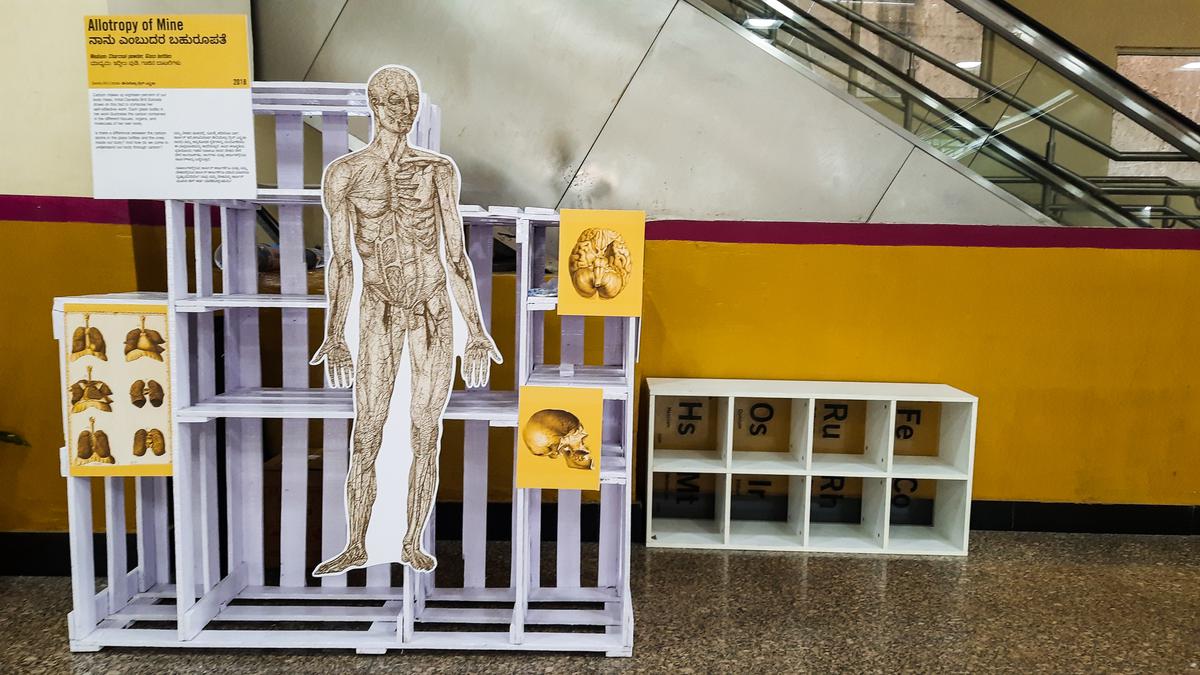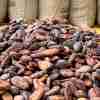
How Science Gallery Bengaluru’s CARBON pop-up exhibition amalgamates art and science
The Hindu
Four exhibits set up across four metro stations in Bengaluru as a part of Science Gallery Bengaluru’s CARBON #inthecity exhibition
Near the ticket counter of Majestic metro station, a cut-out of a human body stands next to a rack with glass containers of various sizes. Inside the labelled containers is some black substance that looks like tiny pieces of coal. A man and a woman in black t-shirts sit next to the rack. A passenger exiting the metro station mistakes them for salespeople selling Ayurveda medicines. They are volunteers of Science Gallery Bengaluru (SCB) sitting next to artist Daniela Brill Estrada’s exhibit, Allotropy of Mine, which indicates the amount of carbon in our bodies. “Each glass bottle in her work illustrates the carbon contained in the different tissues, organs, and molecules of her own body,” the SCB volunteers explain. The exhibit wants us to contemplate these two questions: Is there a difference between the carbon atoms in the glass bottles and within our bodies? And how do we come to understand our body through carbon?
Allotropy of Mine is one of the four exhibits set up across four metro stations in Bengaluru — Majestic, MG Road, Indiranagar, and Sandal Soap Factory — as a part of SCB’s CARBON #inthecity exhibition.
The purpose of CARBON #inthecity is to explore our relationship with carbon in our bodies, cities, and transit systems.
Jahnavi Phalkey, SCB’s executive director and a member of the curatorial team for CARBON #inthecity, says the exhibition is a part of SCB’s efforts to enrich public discourses about climate change.
“In the last couple of decades, we have come to see carbon as a problem element. The political, economic, and public discourse on it is one of taming, reducing, and containing or trading it. We have lost sight of the fact that carbon is fundamental to life on our planet – it is integral to living (and non-living) matter and cannot be simply wished away or tampered with without long-term consequences,” she says.
All four exhibits — Allotropy of Mine, Hydrocarbons, Streichhölzer., and Jīvāṇu — are an amalgamation of art and science. Each one looks at carbon from a unique perspective transcending the binary labels of ‘good’ and ‘bad’.
Daniella, for instance, wanted to explore ideas of “non-hierarchical studies” on matter. She has played with the visual representation of the amount of carbon in the body, using charcoal, another type of matter constructed out of carbon atoms.













